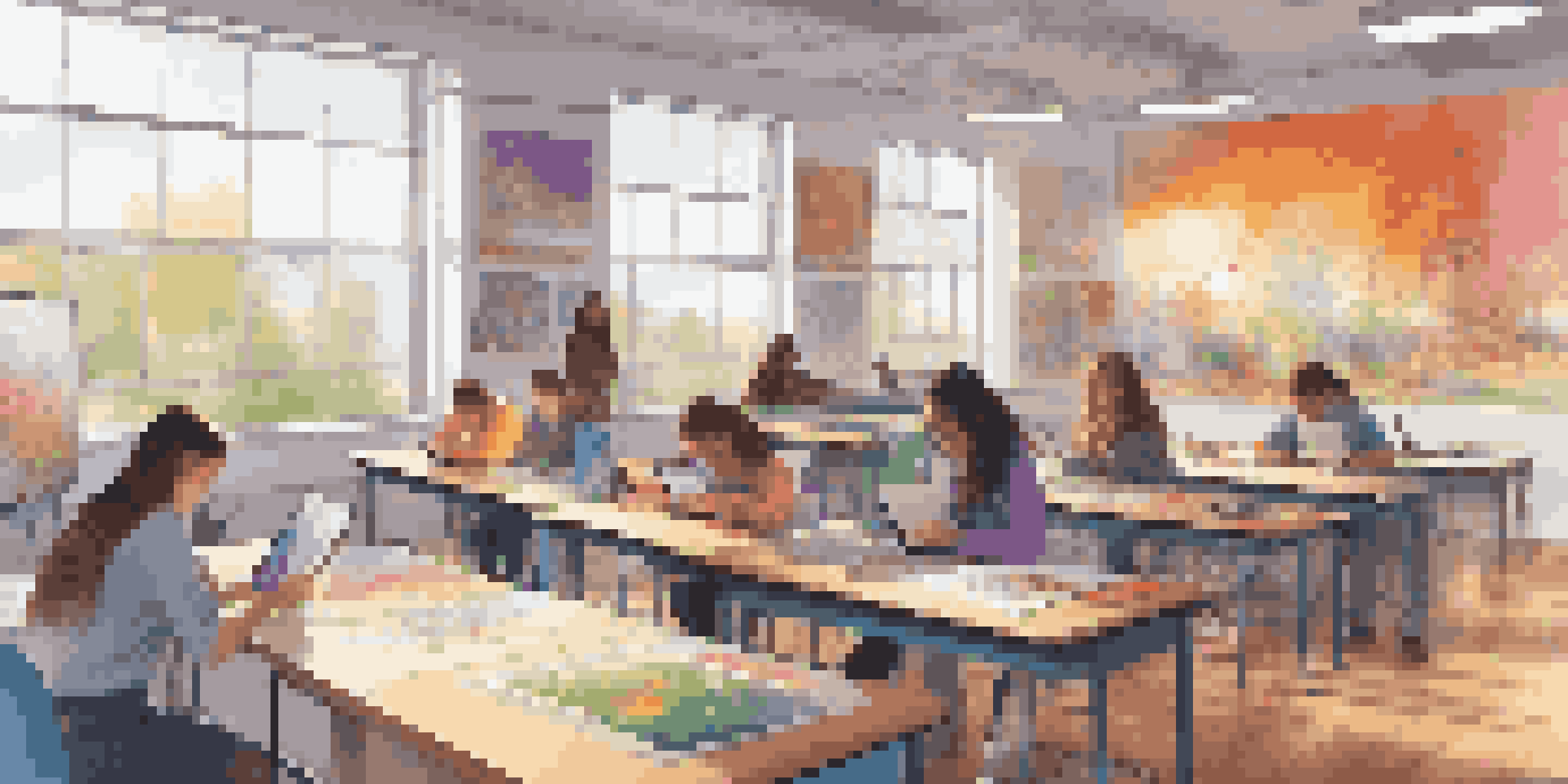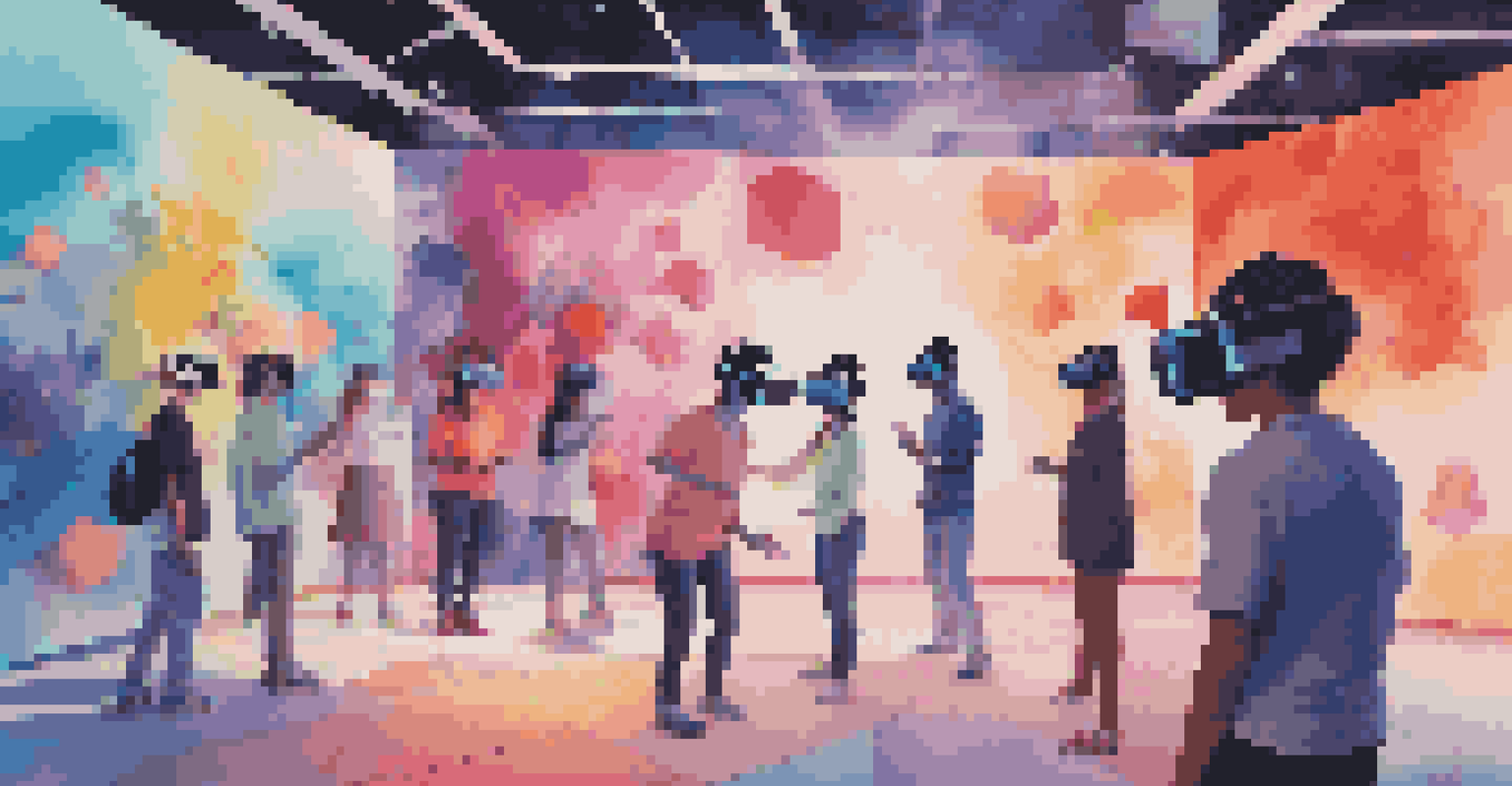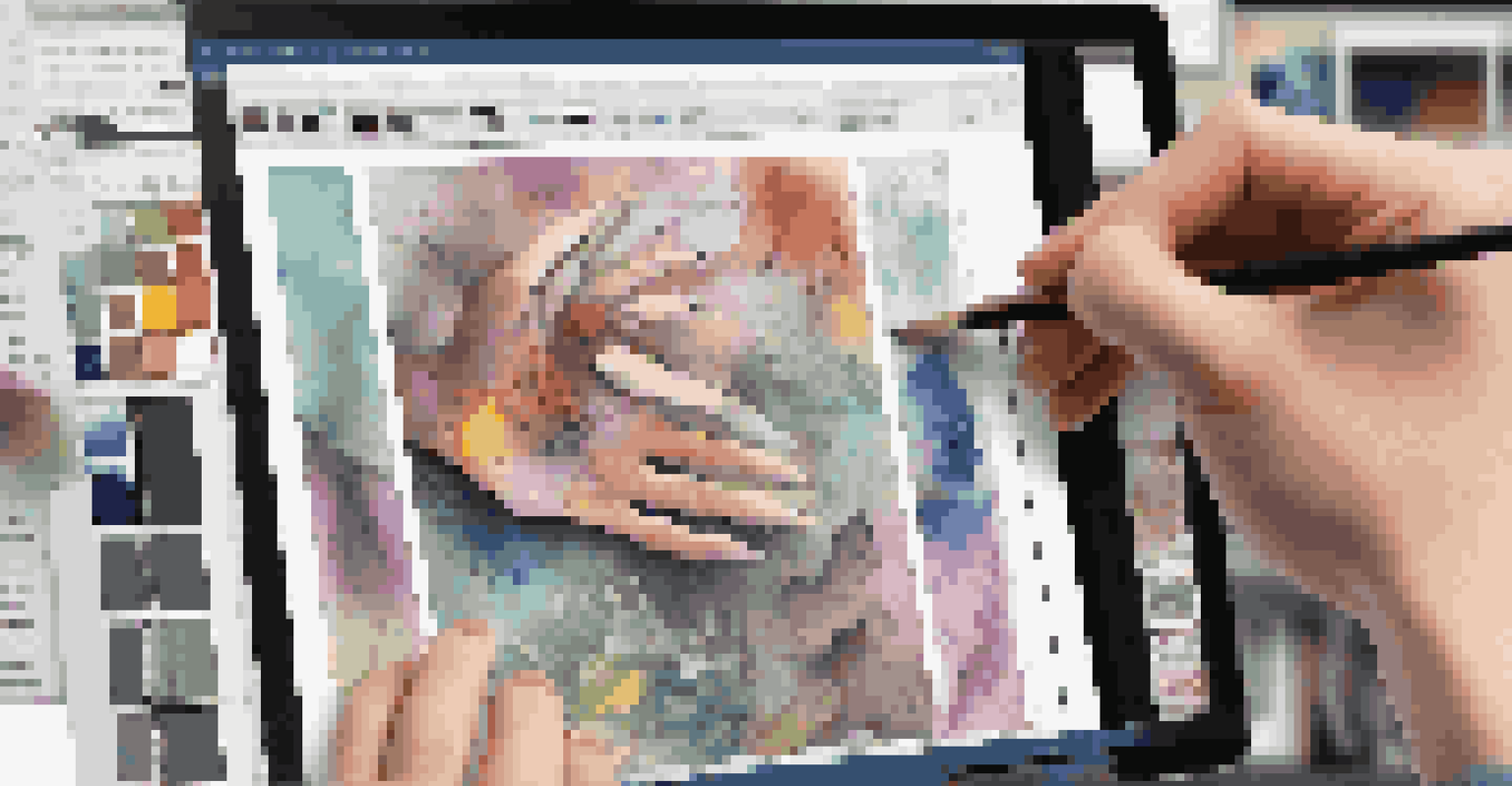Art Education: Teaching Digital Literacy Through Art

Understanding Digital Literacy in Today's World
Digital literacy is more than just knowing how to use technology; it's about understanding how to navigate, evaluate, and create information using digital tools. In an increasingly digital age, these skills are vital for students to thrive academically and professionally. Art education plays a crucial role in developing digital literacy by encouraging creative thinking and problem-solving skills that are essential in the digital landscape.
Digital literacy is not just about technology, it's about how we use it to create, communicate, and connect with others.
For example, when students engage in digital art projects, they learn to use various software and platforms effectively. This not only enhances their technical skills but also promotes critical thinking as they make choices about design and content. Additionally, they learn to analyze their work and the works of others, fostering a deeper understanding of visual communication in the digital world.
By integrating digital tools into art education, educators can create a more dynamic learning environment. This approach not only prepares students for future careers but also empowers them to express themselves in innovative ways. Ultimately, digital literacy becomes a natural extension of their artistic endeavors.
The Role of Art in Enhancing Creative Thinking
Art has always been a discipline that encourages creativity, allowing students to explore their imaginations and express their unique perspectives. When students are involved in artistic projects, they learn to think outside the box, which is a crucial aspect of digital literacy. This creative thinking is essential when engaging with digital platforms, as it allows for innovative solutions to complex problems.

For instance, a student tasked with designing a digital marketing campaign must not only understand the tools at their disposal but also think creatively about how to engage an audience. This combination of artistic skills and digital knowledge prepares them for real-world challenges. Art encourages experimentation, leading to a mindset that values exploration and learning from failure.
Digital Literacy Through Art Education
Art education fosters digital literacy by encouraging students to navigate and create with technology.
By fostering an environment where creativity thrives, art education equips students with the confidence to tackle digital challenges. They learn that mistakes are part of the process, which is essential when navigating the fast-paced digital landscape. This blend of art and technology cultivates a generation of thinkers who are not afraid to innovate.
Integrating Technology into Art Education
The integration of technology in art education allows for diverse learning experiences. Tools such as graphic design software, animation applications, and digital painting programs offer students the chance to explore their artistic capabilities while honing their digital skills. This dual focus not only enriches their art-making process but also makes learning more engaging.
Art is the most beautiful of all lies; it is the expression of the soul that gives voice to emotions.
For example, a project might involve creating a digital collage using online resources, which teaches students both artistic composition and the importance of sourcing digital materials ethically. As they learn to manipulate images and create visually appealing works, they also gain insights into copyright considerations and digital ethics. This hands-on approach makes the learning process more relevant and impactful.
Moreover, by utilizing technology, students can share their artworks with a broader audience through social media and online galleries. This not only boosts their confidence but also teaches them about digital presence and the importance of audience engagement. Such experiences are invaluable in today’s interconnected world.
Collaboration and Communication through Digital Art
Collaboration is a key component of both art and digital literacy. In art education, students often work together on projects, fostering teamwork and communication skills. When these projects are digital, they learn to use various platforms for collaboration, such as shared documents and creative apps, which reflect real-world practices in many industries.
For instance, students might collaborate on a digital mural, with each member contributing their own designs. This not only helps them to understand different artistic styles but also teaches them how to communicate effectively within a team. They learn to provide constructive feedback and make collective decisions, skills that are crucial in any collaborative environment.
Creativity Enhances Problem-Solving
Engaging in artistic projects cultivates creative thinking, essential for tackling digital challenges.
Such collaborative projects can extend beyond the classroom, connecting students with artists and peers worldwide. This global perspective enhances their understanding of different cultures and artistic expressions, further enriching their educational experience. Ultimately, these collaborations prepare students for the interconnected nature of the digital age.
Promoting Critical Thinking through Art Critique
Art critique is a fundamental part of art education that promotes critical thinking. By analyzing and discussing their own works and those of their peers, students learn to evaluate artistic choices and consider different perspectives. This process also encourages them to articulate their thoughts clearly, a vital skill in digital literacy.
For example, when students critique a digital artwork, they must consider elements such as composition, color theory, and message. This not only deepens their understanding of art but also trains them to think critically about digital content they encounter online. It teaches them to question the validity and purpose of information, which is essential in today’s media landscape.
Furthermore, through this critique process, students develop their own artistic voice, learning to defend their choices while remaining open to feedback. This balance of confidence and humility is essential for success in both artistic and digital endeavors. As they navigate the complexities of critique, they become more discerning consumers and creators of digital content.
Nurturing Emotional Intelligence through Art
Art education not only enhances technical skills but also nurtures emotional intelligence. Engaging in creative processes allows students to explore their feelings and express their emotions in a safe environment. This emotional exploration is essential for developing empathy, which is a key component of digital literacy, especially in online interactions.
For instance, when students create art that reflects their personal experiences or viewpoints, they learn to communicate their emotions visually. This process encourages self-reflection and helps them to understand the emotions of others, fostering a sense of community within the classroom. Such emotional awareness is crucial for navigating digital spaces, where misunderstandings and conflicts can easily arise.
Collaboration Builds Communication Skills
Digital art projects promote teamwork and effective communication, preparing students for real-world collaboration.
Moreover, as students share their artworks and stories, they build connections with their peers. This sharing promotes a supportive atmosphere where everyone feels valued, enhancing their social skills both online and offline. Ultimately, by integrating emotional intelligence into art education, we prepare students to engage with the digital world thoughtfully and compassionately.
Future Trends: The Evolution of Art Education and Digital Literacy
As technology continues to evolve, so does the landscape of art education. Emerging tools such as virtual reality (VR) and augmented reality (AR) are transforming how students experience and create art. These advancements not only enhance artistic expression but also provide new avenues for teaching digital literacy in engaging ways.
For example, VR art experiences allow students to create immersive environments, pushing the boundaries of traditional art forms. This not only captivates students' attention but also encourages them to learn about the technology behind these tools. As they experiment with VR and AR, they develop a deeper understanding of how technology can enhance storytelling and artistic communication.

Looking ahead, the future of art education will increasingly intertwine with digital literacy, preparing students for careers that blend creativity and technology. As educators embrace these changes, they will continue to shape the next generation of artists and thinkers who are well-equipped to navigate the digital landscape. This evolution promises a rich, multifaceted approach to education that values both artistic expression and technological proficiency.